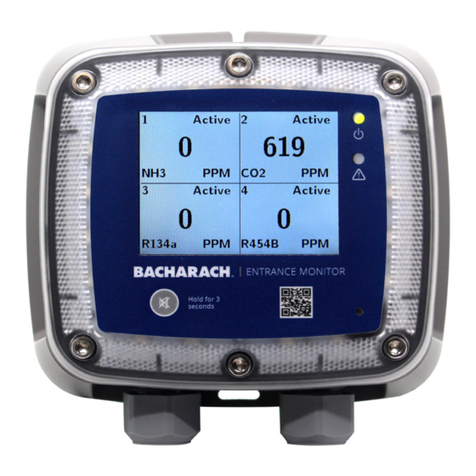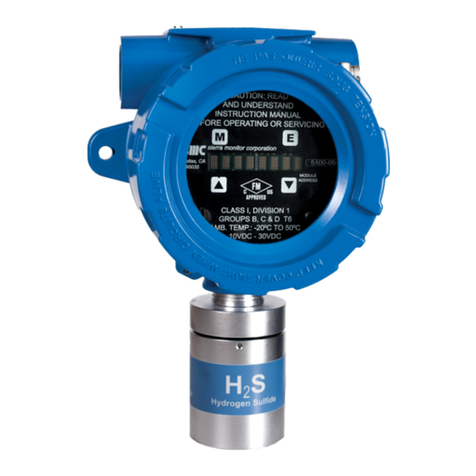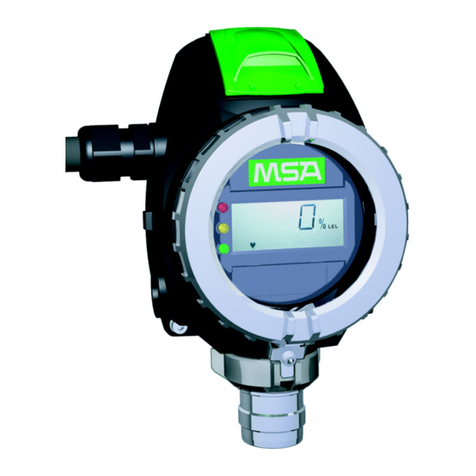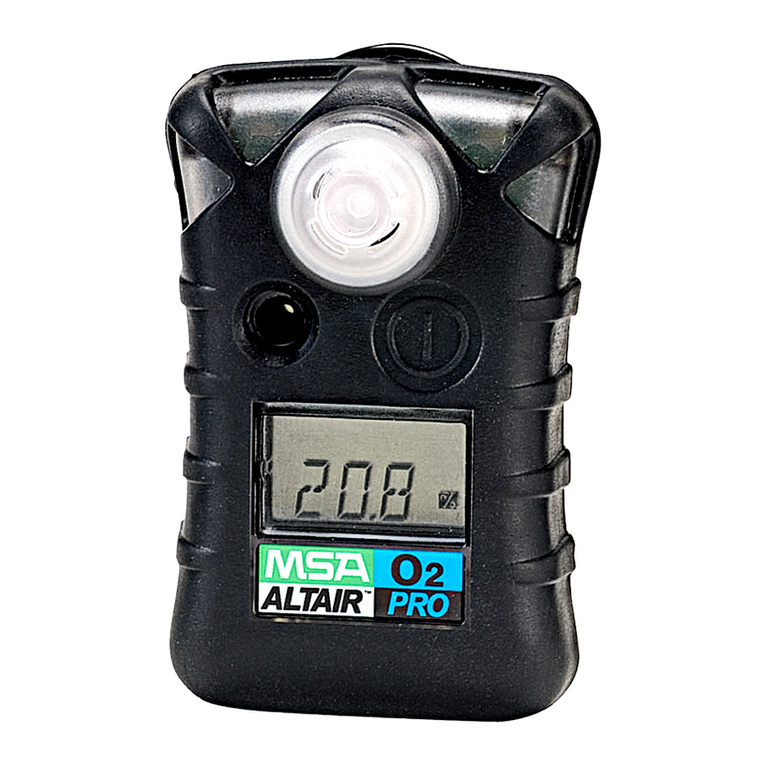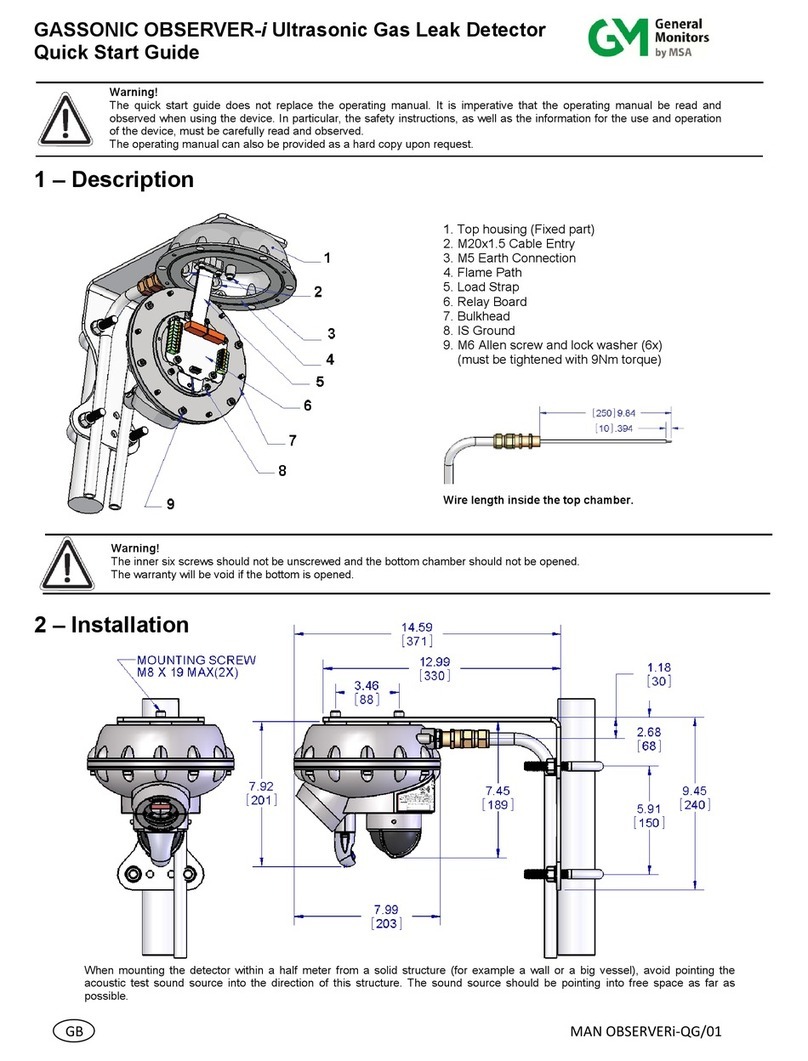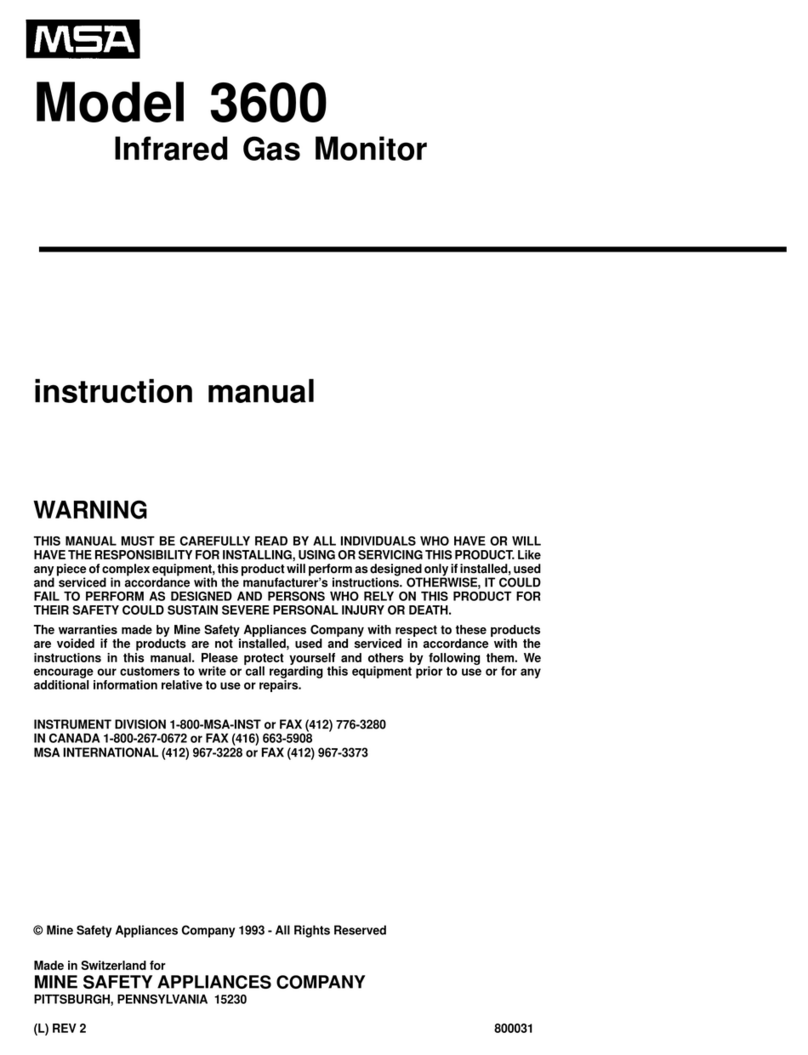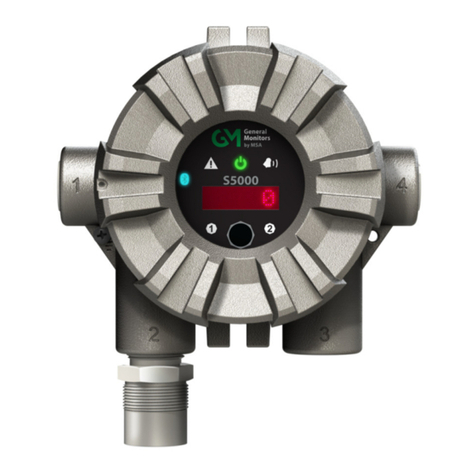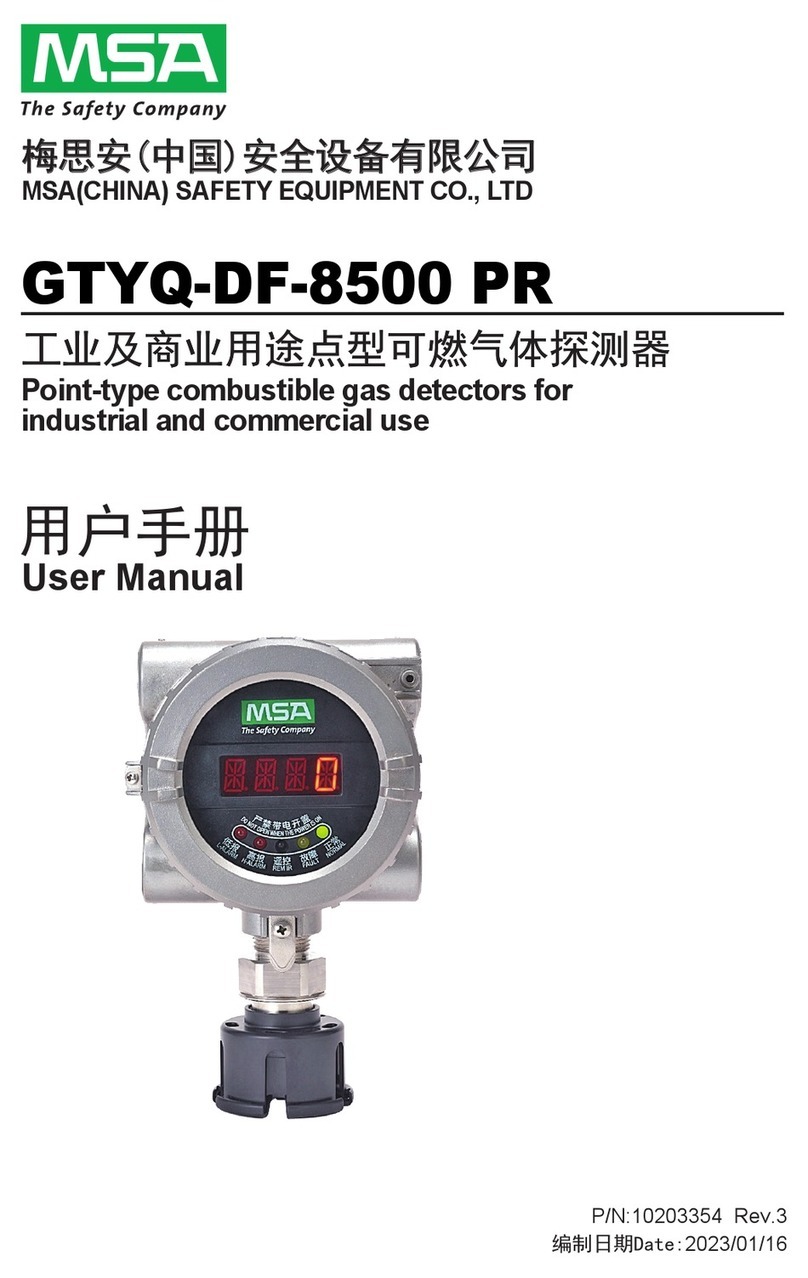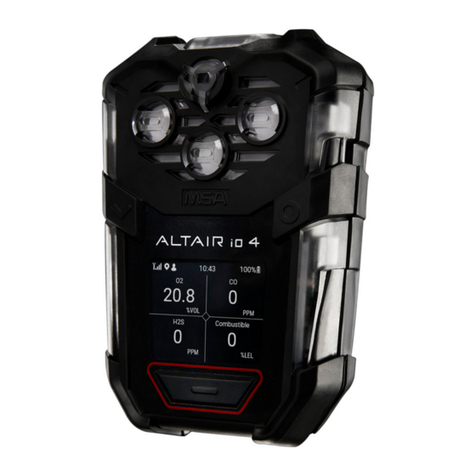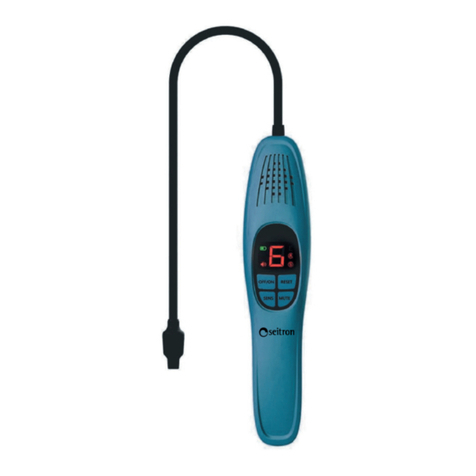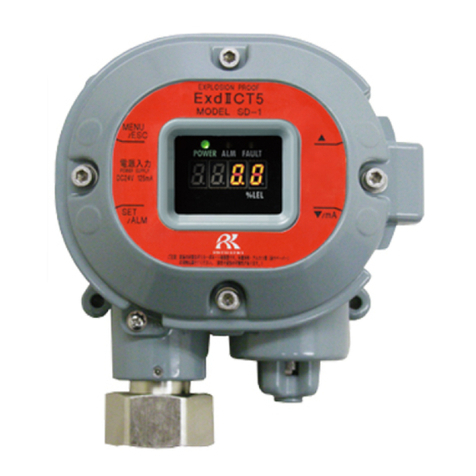
3
Table of Content
Table of Content
1. Instrument Safety and Certifications. ...........................................................................5
1.1 SafetyLimitations and Precautions. .........................................................................6
1.2 DateofInstrument Manufacture................................................................................7
1.3 Marking, Certificates andApprovals according to the
Directive94/9/EC (ATEX). .........................................................................................8
2. Quick Start.10
2.1 TurningONtheSIRIUSMultigasDetector. ............................................................. 11
2.2 Moving through theSIRIUS MultigasDetector Pages............................................. 12
2.3 TurningOffthe SIRIUS MultigasDetector. .............................................................. 12
3. Using the SIRIUS Multigas Detector. ........................................................................... 13
3.1 Power Systems. ..................................................................................................... 13
3.2 Battery Pack Removaland Replacement. .............................................................. 13
3.3 Battery Charging (Lithium-Ion Battery Pack Only). ................................................. 14
3.3.1 To Charge theInstrument. ............................................................................ 15
3.4 Last Cal Date.......................................................................................................... 15
3.5 FreshAir Set Up Option (for automatic zero adjustment). ...................................... 16
3.6 Battery Life Indicator. .............................................................................................. 16
3.6.1 Battery Warning. .......................................................................................... 16
3.6.2 Battery Shutdown......................................................................................... 17
3.7 Sensor MissingAlarm. ........................................................................................... 17
3.8 PIDAlarms. ............................................................................................................ 17
3.8.1 PID Bulb -Cal Now. ...................................................................................... 18
3.9 Verifying Pump Operation. ...................................................................................... 18
3.10 To Clear PumpAlarm. ............................................................................................. 19
3.11 Confidence Flash.................................................................................................... 19
3.11.1Safe LED. ..................................................................................................... 20
3.11.2 OperatingBeep. ........................................................................................... 20
3.12 Calibration Check. .................................................................................................. 20
4. Measuring Gas Concentrations. .................................................................................. 21
4.1 Combustible Gases (%LEL). ................................................................................. 21
4.1.1 OxygenMeasurements (% O2). ................................................................... 22
4.1.2 Toxic Gas and VOC Measurements. ............................................................ 22
4.2 Viewing Optional Displays. ..................................................................................... 23
4.2.1 Peak Readings (PEAK)................................................................................ 23
4.2.2 Minimum Readings(MIN). ............................................................................ 24
4.2.3 ShortTerm Exposure Limits (STEL). ............................................................ 24
4.2.4 Time WeightedAverage (TWA). ................................................................... 25
4.2.5 Time and Date Display. ................................................................................ 25
4.3 PID Setup. .............................................................................................................. 26
4.3.1 Displaying CurrentResponse Factor. ........................................................... 26
4.3.2 Changing ResponseFactor. ......................................................................... 26
4.3.3 Selecting a CustomResponse Factor. ......................................................... 26
4.3.4 Changing PID BulbSelection. ...................................................................... 27


